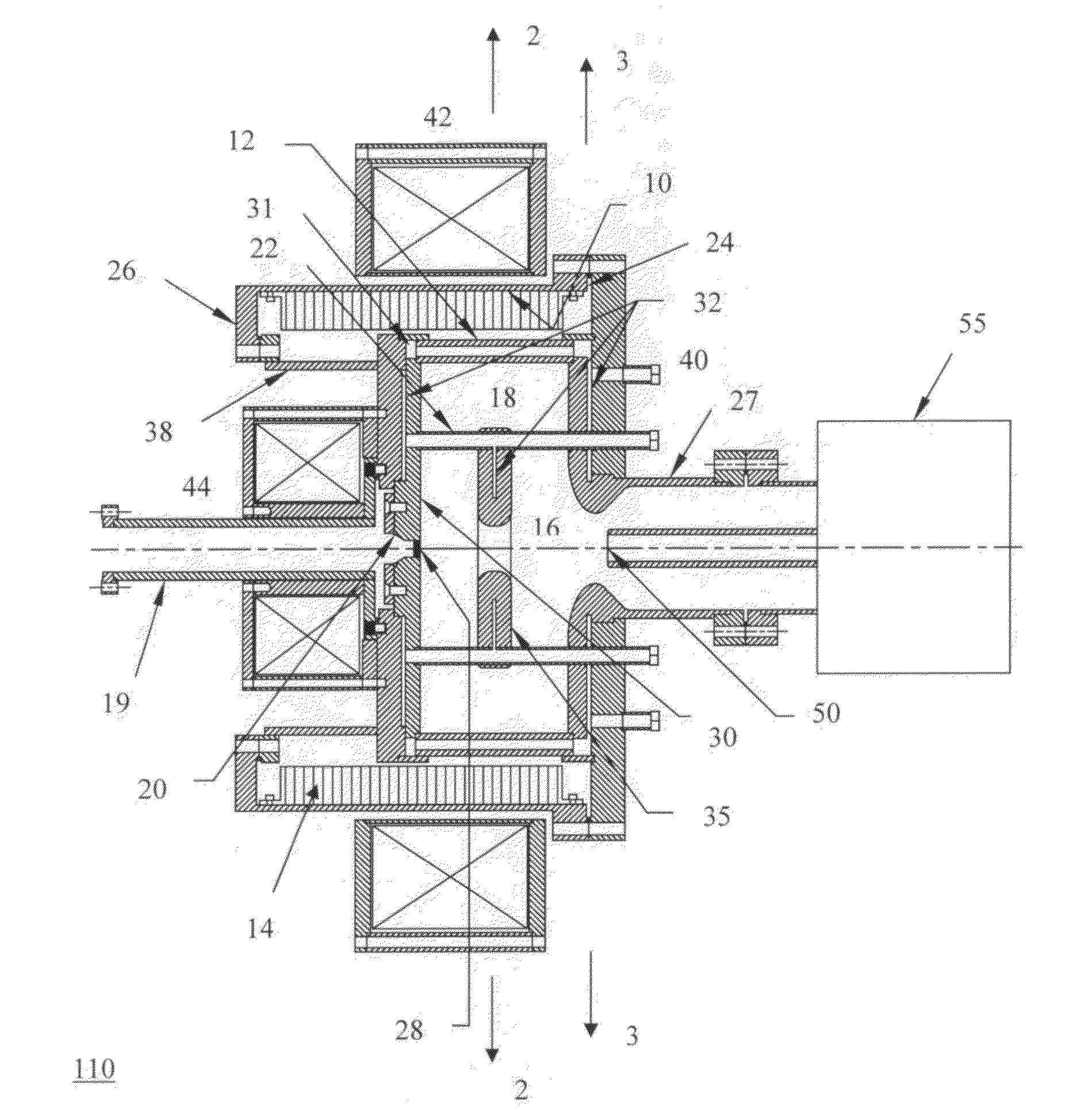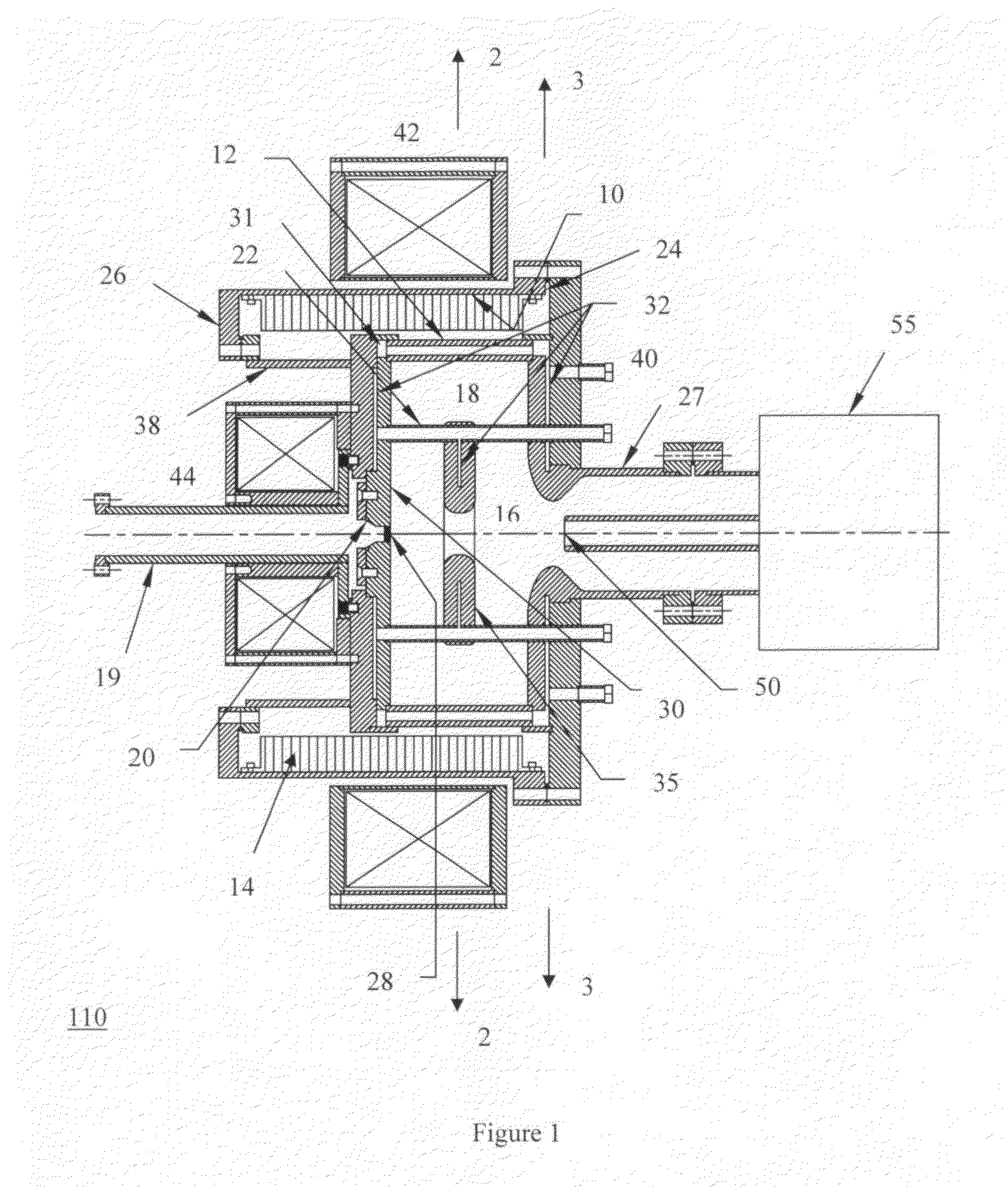Ultra-high vacuum photoelectron linear accelerator
a photoelectron and ultra-high vacuum technology, applied in the direction of linear accelerators, accelerators, electrical devices, etc., can solve the problems of reducing the q-factor of the cavity, limiting the amount of heat that can be removed from the surface of the cavity, and having to replace the entire cavity, etc., to achieve the effect of superior cooling and optimal operation
- Summary
- Abstract
- Description
- Claims
- Application Information
AI Technical Summary
Benefits of technology
Problems solved by technology
Method used
Image
Examples
Embodiment Construction
[0020]The ultra high vacuum (UHV) photoelectron linear accelerator (linac) of the present invention with the modified PWT design 110, or hybrid mode design 120, comprises a radiofrequency cavity having a porous outer wall 12 through which is connected a pressure chamber 10 that houses non-evaporative getter (NEG) material 14 for ultra high vacuum pumping. The NEG pumps may be commercially available NEG modules (for example, SAES) 14 mounted on the inside wall of the pressure chamber 10, or a layer of NEG film sputtered directly onto the inside wall of the pressure chamber 10. The removable pressure chamber 10 is attached to the body of the linac 110 or 120 via a standard Conflat flange 24, and a second Conflat flange 26 that is inverted from the standard design. The standard Conflat flange 24 has a bolt circle on the outside of the knife edge. The inverted Conflat flange 26 has a bolt circle on the inside of the knife edge. The mating inverted Conflat flange 26 is optionally connect...
PUM
 Login to View More
Login to View More Abstract
Description
Claims
Application Information
 Login to View More
Login to View More - R&D
- Intellectual Property
- Life Sciences
- Materials
- Tech Scout
- Unparalleled Data Quality
- Higher Quality Content
- 60% Fewer Hallucinations
Browse by: Latest US Patents, China's latest patents, Technical Efficacy Thesaurus, Application Domain, Technology Topic, Popular Technical Reports.
© 2025 PatSnap. All rights reserved.Legal|Privacy policy|Modern Slavery Act Transparency Statement|Sitemap|About US| Contact US: help@patsnap.com



